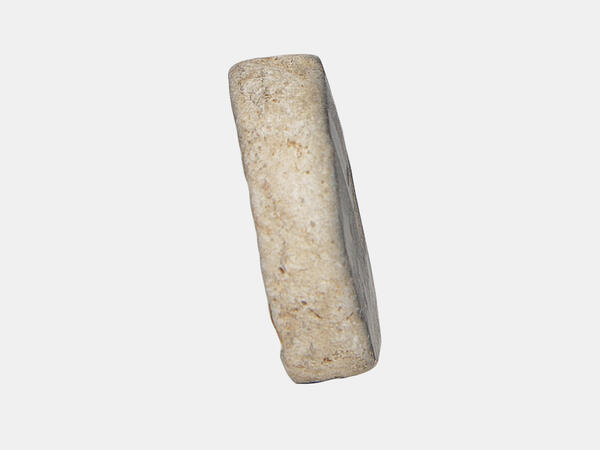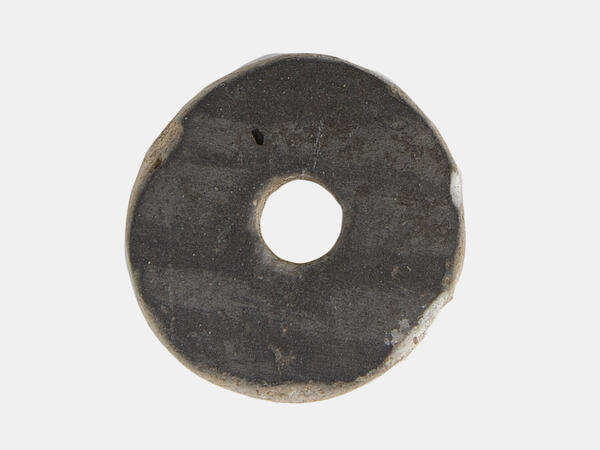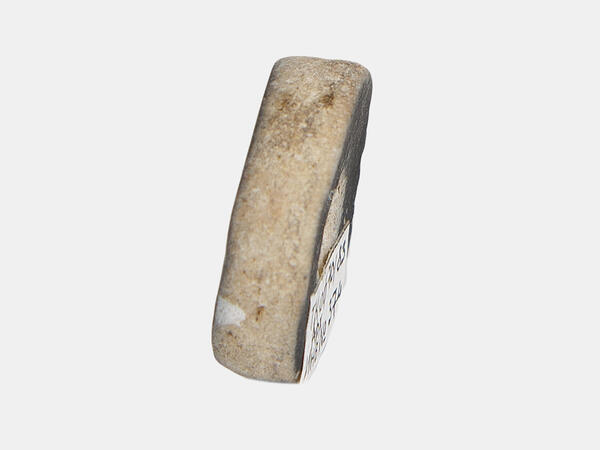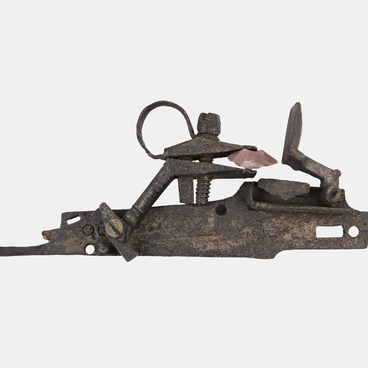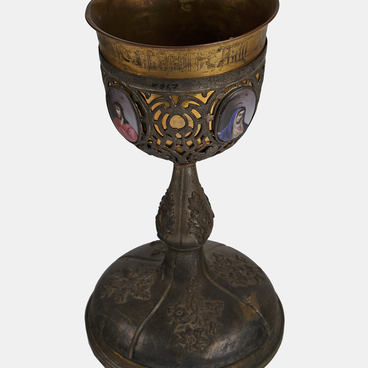A spindle whorl is one of the most common archaeological finds. Whorls were made of materials like stone, clay, bone, wood, metal and even shards of broken pots. Due to their small size and strength, whorls have been well preserved in different archaeological layers.
Whorls are small weighted objects in the shape of cylinders, balls or donuts with a hole in the center. They were fitted to the bottom of a spindle to make it heavier and to secure the yarn. The spindle was the main working tool of a woman in Rus and one of the most ancient tools in the world. Yarn was spun using a spindle — threads were drawn from yarn, twisted, and wound. The spindle was made of birch, it was from 20 to 80 centimeters long.
During spinning, the spindle rotated quickly, twisting fibers into yarn. The whorl was hung from below: it helped the spindle to stay vertical and served as a flywheel, allowing it to spin long and fast. This was necessary for pulling the fabric off a mass of fibers which the spindle then twisted into yarn.
Thanks to the whorl, the thread did not break, but was long and solid. Only wool, which had greater fiber density, could be spun without a spindle whorl. Linen was spun by putting a whorl on the upper end of a spindle.
Old Russian spindle whorls sometimes feature patterns and inscriptions: this could be the name of the owner, a dedicatory signature, a spell, or an image of a talisman. Women marked their spindle whorls not because they were expensive — this had to do with folk beliefs and pagan rituals.
Women gathered to spin in the common family house, sang songs, told fairy tales, danced, and told fortunes. The names on the spindles were needed not to confuse one’s personal set, which was more familiar and easier to work with.
After Rus adopted Christianity, Orthodox priests called these traditions “demonic games and dances” and tried to eradicate them. Spinning flax and wool, however, remained for many centuries the main occupation of women of all classes. This is confirmed by a variety of spindle whorls found both in ordinary huts and as part of precious treasures.

